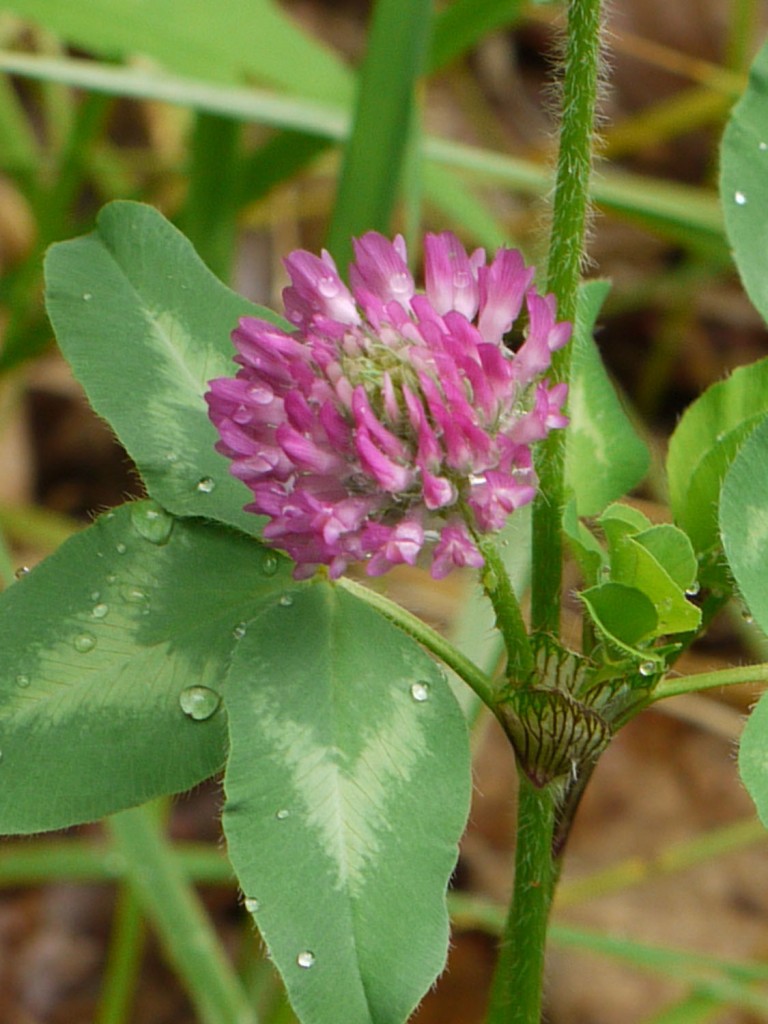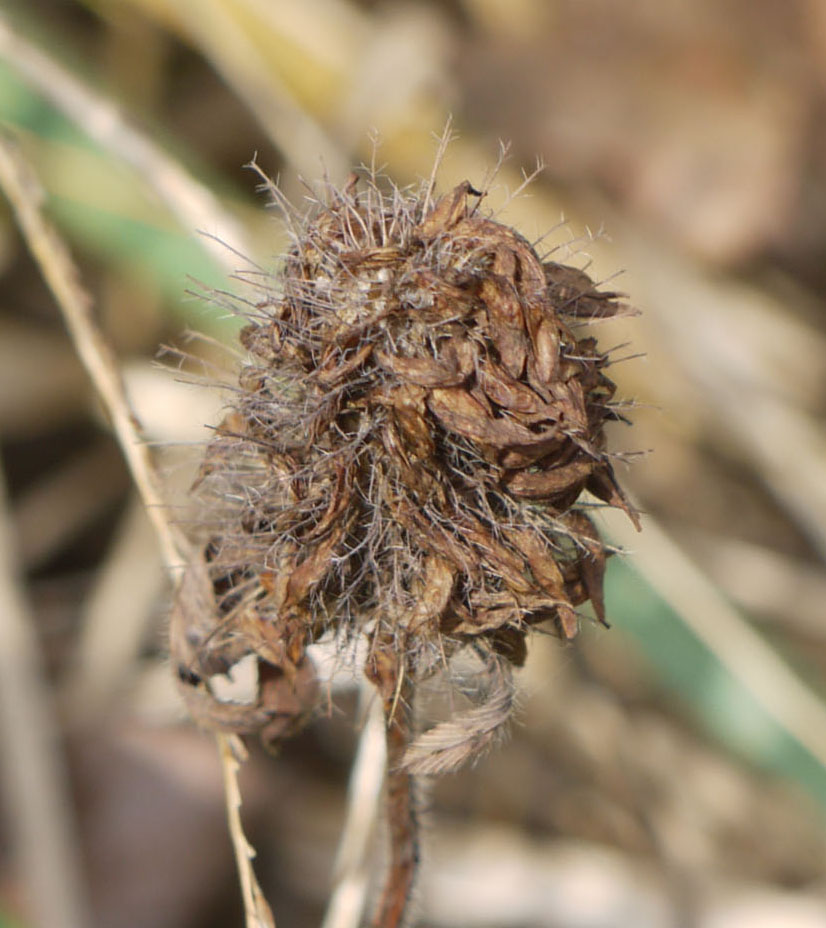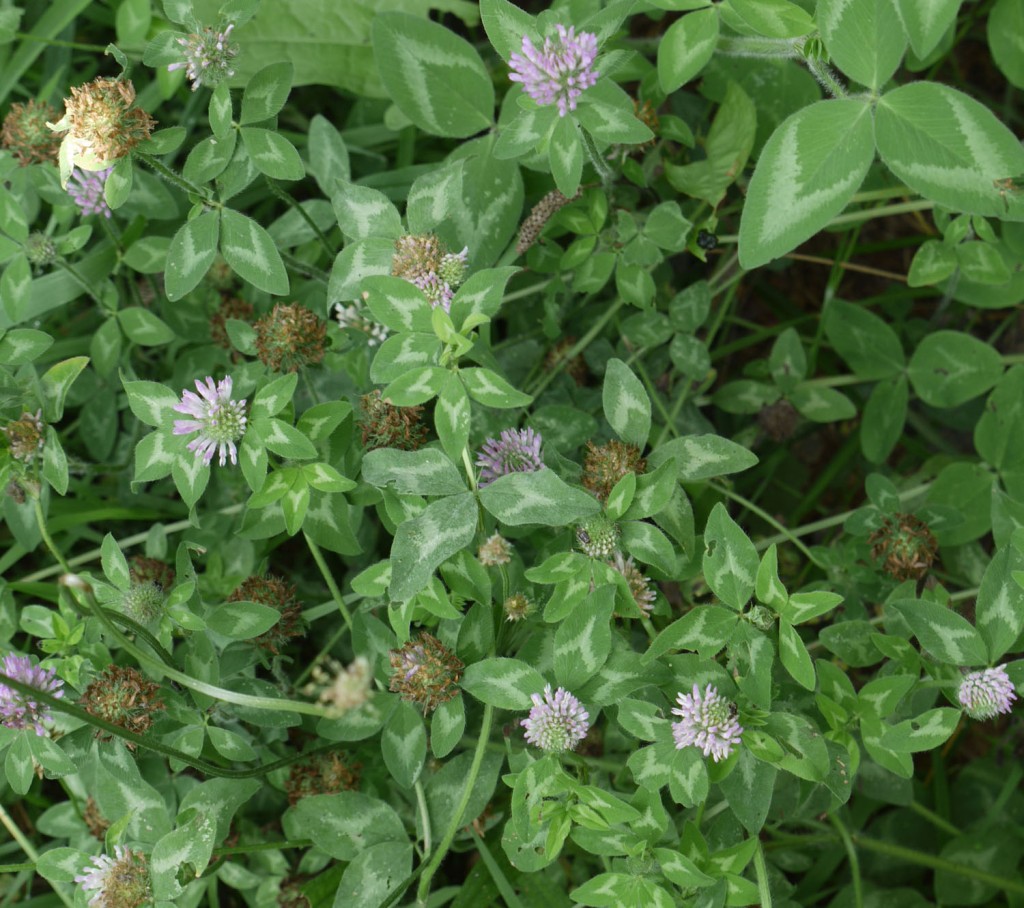Both White clover and Red clover are common throughout a number of continents. This post compares these two clovers.
The above image shows a patch of White clover (Trifolium repens) in early spring — before blooming. The compound leaves have three rounded leaflets with a white chevron.
White clover flowers begin blooming from the point closest to the stalk toward the middle of the flower head.
In the next photo, the inflorescence on the right is just beginning to bloom while the left flower head is moving past its prime flowering phase.
Here’s a close view of the flower head. Check out the individual flowers which are “pea-like” in shape.
The next image illustrates a White clover plant with its smooth wiry stem and compound leaves. The stem for the inflorescence does not have any leaves.
Here’s a very close view of the individual flowers within the upper part of the inflorescence.
As the initial flowers die back, they droop downwards from the flower head.
After all the flowers have bloomed and wilted, they gradually turn from green to brown.
The final image of White clover includes inflorescences in various stages of growth and die-back.
Turning to Red clover (Trifolium pratense) . . . this plant is taller than White clover — with larger leaves (and leaflets) and larger flower heads. The leaflets are more oval-shaped (as compared to White clover leaflets’ round shape).
As the inflorescence matures, its flowers also begin to bloom from nearest the stalk toward the center of the flower head.
Red clover’s stem is rather hairy which becomes obvious when you look closely. Even the inflorescence and leaves may have fine hairs.
Notice how Red clover has a compound leaf (three leaflets with those white chevrons) just below the inflorescence. If the flower head is at the top of the plant, the compound leaf is sessile (no stalk), while the inflorescence arising from the plant’s axil has a stalked compound leaf.
Look closely at the Red clover inflorescence to see the individual flowers.
As the Red clover flowers die, they turn brown. They do not drop downwards as the White clover flowers do.
Eventually, the inflorescence becomes a brown cluster of seed cases at the end of a dried stem.
Notice the fine threads and hairs intermingled with the dried seed cases.
This last image shows a patch of Red clover in various stages of growth.


















LOVELY photos of one of the most common weeds in Texas. I love to nibble on the clovers, which are tart like lemon. I used to lie for hours in the shade on clover when a child, never guessing it was edible. Now I’d hoped my caged house bunny would like it but she doesn’t….spoiled, of course, to everything I don’t have at our new house. She and my pet house [caged] chicken are buddies, and this chick eats ALL plants, is totally dependent upon my discretion and supplying a steady flow of whatever I have, can find. I learned to taste most all wild plants first before giving her a sample from my zeriscaped/ organic yard. I’m still trying to figure how the third baby spotted salamander got into the house, since there’s only one tiny tiny crack at the end of the door sweep as a possibility, OR, perhaps they’ve
come in on some of the samples and I simply missed seeing them.
I look forward to exploring your site and learning from your materials
for the first time. Thanks for the care and patience it must have taken to put it together for all the interested readers. Lynda
Pingback: Red Clover Herb - The Right Stuff